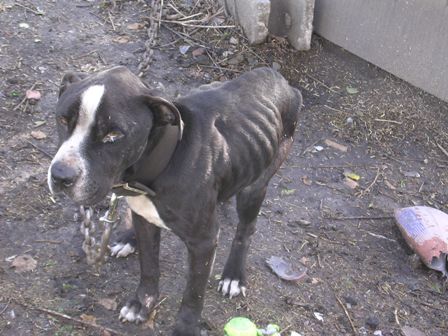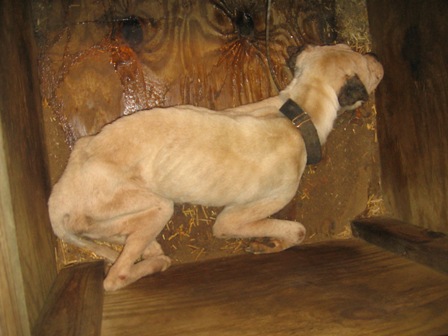PETA’s Position on Pit Bulls
To clarify PETA’s position on pit bulls: We’re for ’em.
By “for ’em,” I mean that we are for pit bull protection, for their happiness, and for treating them like dogs instead of like cheap burglar alarms, punching bags, or gladiators in perverted death matches.
Some pit bull fanciers out there seem to think that PETA is “against” pit bulls because we don’t oppose breed-specific measures to address what is obviously a breed-specific crisis. Au contraire. If someone proposed a ban on breeding Labrador retrievers or Chihuahuas or poodles (you get the picture – any dog), we’d be for those too. That’s because we don’t think any dogs should be brought into the world as long as millions are dying for lack of homes in animal shelters and on the streets every year.
Millions, people. Millions of dogs just like the ones you share your homes with have to be euthanized because too many people fail to spay and neuter their animals and choose to buy from breeders and pet stores instead of saving lives by adopting from animal shelters. Wouldn’t we be derelict in our duty if we didn’t support laws that would alleviate suffering and reduce those numbers? If those laws saved just one animal from suffering a miserable life or a painful death, wouldn’t they be worth it?
Pit bulls are often singled out by legislators because they are involved in so many attacks on humans and other dogs—as well as horrific cruelty cases. Our fieldworkers know firsthand just how frequently and mercilessly pit bulls are abused. These dogs are hands-down the most common victims of heartbreaking abuse and severe neglect that our caseworkers encounter.
I’m going to warn you—the following pictures, which were taken by our caseworkers of pit bulls they have helped, are graphic and disturbing. But I hope you’ll steel yourself to look at them and decide for yourself whether or not these suffering dogs would have been better off if they had never been born:
This is Rikus.
PETA fieldworkers found him cowering in his doghouse with a gaping wound on one of his legs, exposing muscle and bone. His face was swollen to the size of a melon because of infected wounds that he had suffered during a dogfight.
Music was nothing more than skin and bones when we found him, without food or water, and with nothing but a rusty pile of junk for shelter. He was shivering in freezing weather, trapped at the end of a heavy chain.
Music’s ears were shredded and his body was covered with scabs and scars—an indication that he had been forced to fight with other dogs.

In December of last year, PETA staffers found Zoo—also skin and bones—chained and starving in Suffolk, Virginia.
Our vet determined that Zoo was 20 to 30 pounds underweight. Zoo tested negative for intestinal parasites—meaning that his emaciated body condition was because of starvation. He was also filthy, flea-ridden, and heartworm positive. We charged his callous owners with cruelty to animals. They pleaded not guilty in court, but the judge saw through their lies and convicted them. They were sentenced to 30 days in jail (suspended) and forced to pay fines of $250 each as well as restitution for Zoo’s veterinary bill.

On New Year’s Day, heartbroken PETA staffers discovered this angel, Hugo, dead inside his PETA-supplied doghouse. A necropsy report confirmed that Hugo had been starved to death—the only contents of his stomach were grass and orange peels. He had scars consistent with dogfighting and had a fractured rib that was the result of trauma. We worked with law enforcement officials to bring charges against the person who was responsible for Hugo’s prolonged suffering and death. A judge sentenced the defendant to 120 days in jail and five years of probation during which time he is not allowed to inhabit a residence that has any animals in it.
Blackie was chained to an old carrier with no food or water. He was painfully thin, and his right rear leg had a compound fracture that had been left to rot for weeks.
Written by Alisa Mullins

